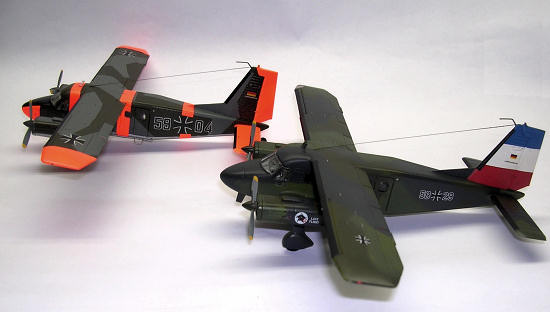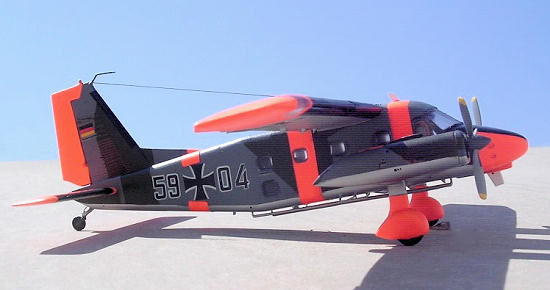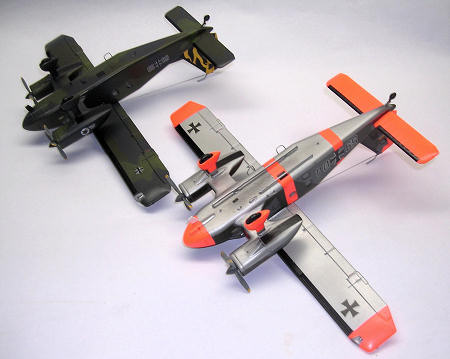
Revell 1/72 Do-28D
| KIT #: | 04193 |
| PRICE: | 7.50 Euros |
| DECALS: | yes |
| REVIEWER: | Carmel J. Attard |
| NOTES: | Matchbox molding |

| HISTORY |
 The role of the Do28D2 was mainly
twin engine training for prospective C-160 Transall pilots on
The role of the Do28D2 was mainly
twin engine training for prospective C-160 Transall pilots on
| THE KIT |
 The Revell kit of the Do28 has been
around for the best part of 35 years even though the reissue has a revised decal
sheet that can only be described as superb. The kit was originally issued by
Matchbox as a 3-colour plastic kit offering Do28 of Federal German Naval Air
Squadron, 1972 and alternative markings for a Swedish Red Cross Flying Doctor
service during the
The Revell kit of the Do28 has been
around for the best part of 35 years even though the reissue has a revised decal
sheet that can only be described as superb. The kit was originally issued by
Matchbox as a 3-colour plastic kit offering Do28 of Federal German Naval Air
Squadron, 1972 and alternative markings for a Swedish Red Cross Flying Doctor
service during the | CONSTRUCTION |
 around camouflage
as per kit. Much of the extra work made to the Dorniers applied to the former
build while less work was needed to the second one. The extra work added was as
follows:
around camouflage
as per kit. Much of the extra work made to the Dorniers applied to the former
build while less work was needed to the second one. The extra work added was as
follows:
| COLORS & MARKINGS |
 The two tone grey green camouflage
and day-glow version was made in standard splinter camouflage using Humbrol
paint Ocean grey 106, Tamiya Olive green XF62, and Revell Blaze with silver
underside. Appropriate decals for the type came from the spare decal box. The
second kit, this had the tail unit painted yellow to one side and red white and
blue on the other. The three tone wrap round was made using Tamiya German grey,
Tamiya XF62 olive drab and a mix of medium green with a few drops of yellow for
the field green. This was given a coat of ‘Klear’ and the kit decals applied on.
Both kits were finally given a semi gloss lacquer overall by Model Master.
The two tone grey green camouflage
and day-glow version was made in standard splinter camouflage using Humbrol
paint Ocean grey 106, Tamiya Olive green XF62, and Revell Blaze with silver
underside. Appropriate decals for the type came from the spare decal box. The
second kit, this had the tail unit painted yellow to one side and red white and
blue on the other. The three tone wrap round was made using Tamiya German grey,
Tamiya XF62 olive drab and a mix of medium green with a few drops of yellow for
the field green. This was given a coat of ‘Klear’ and the kit decals applied on.
Both kits were finally given a semi gloss lacquer overall by Model Master.| CONCLUSIONS |
If you would like your product reviewed fairly and quickly, please contact me or see other details in the Note to Contributors.